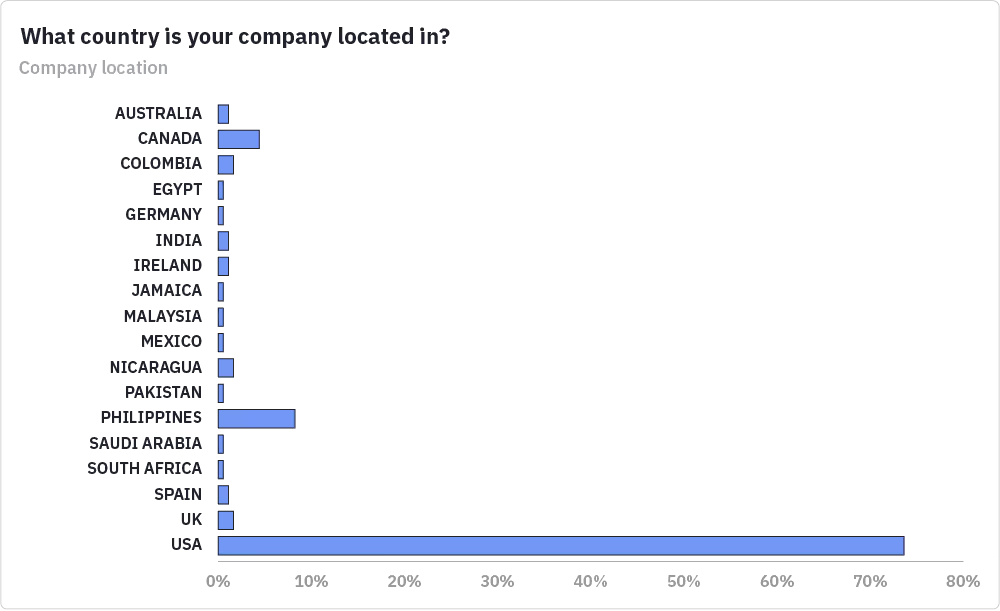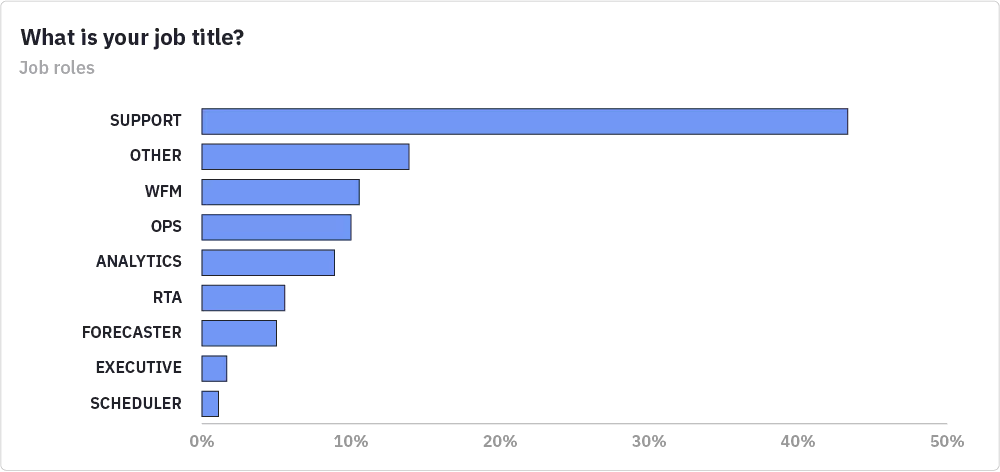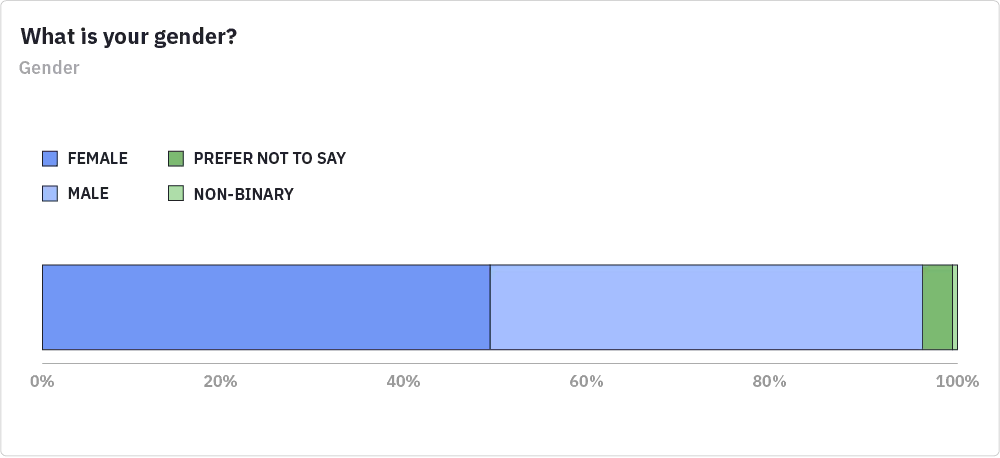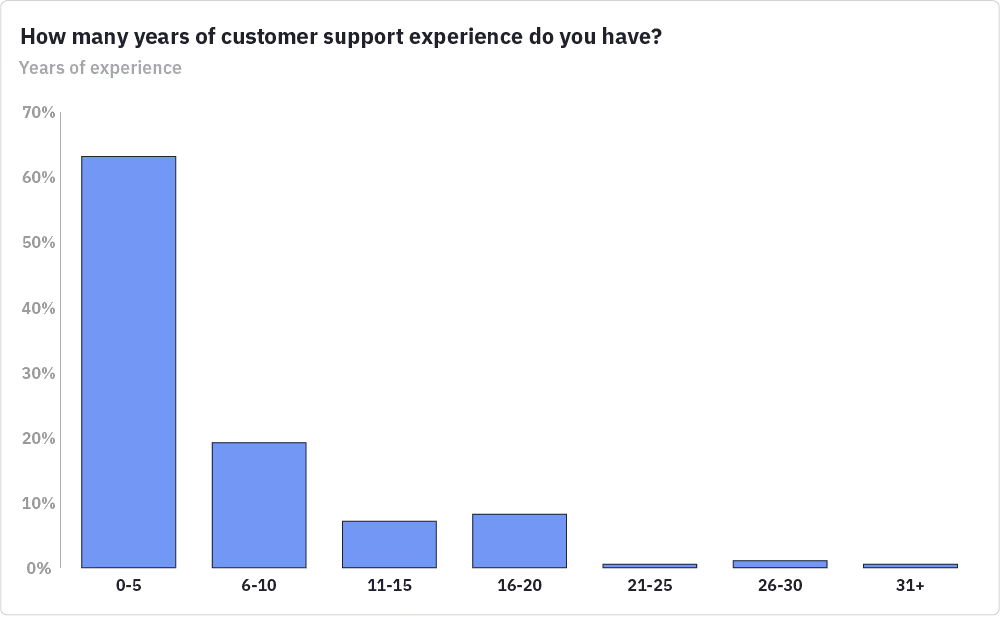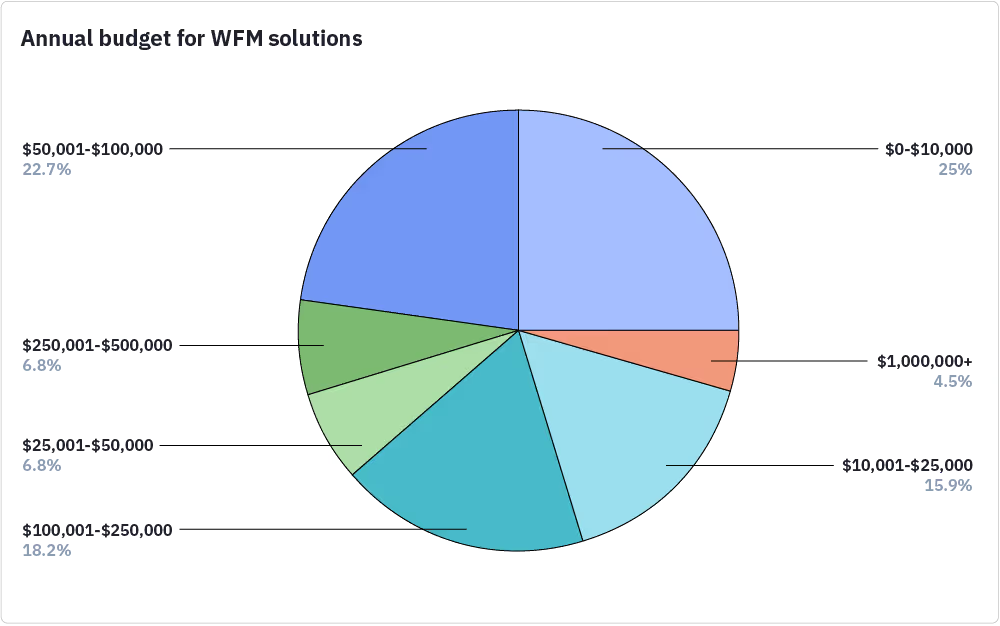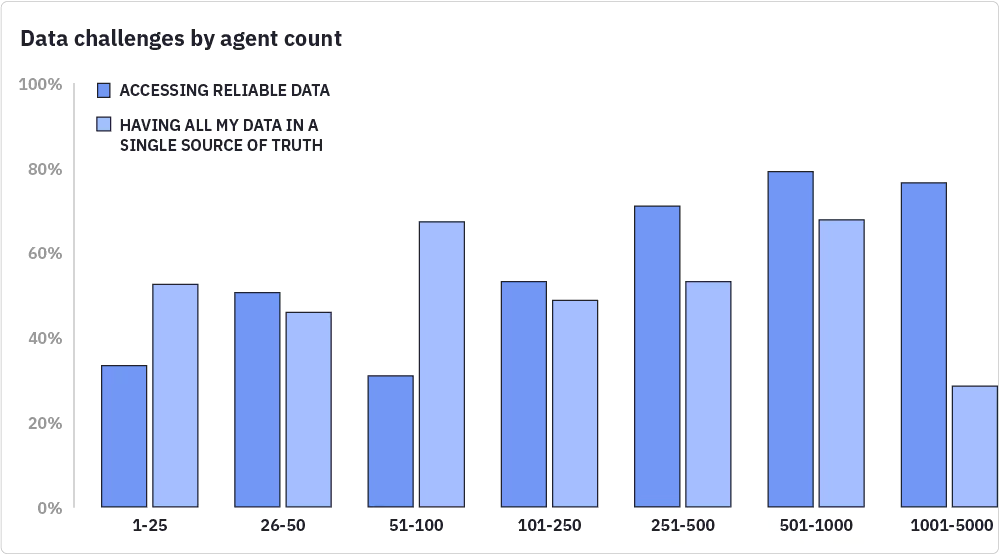2023 benchmark survey report

A letter from our CEO
Calling all trailblazers, wave riders, and agents of change
You don’t need me to tell you that customer support has changed dramatically in recent years — you’re living it. Between rising customer expectations, rapidly evolving technology, and increasing global competition, the phrase “riding the waves of change” feels almost too tame. If anything, it’s more of a relentless pummeling.
Of course, it’s not all bad. Change undoubtedly brings challenges, but in times of challenge there is always immense opportunity. As pioneers of the new era of support, you have the hugely important task of guiding your teams and your companies into a better way of doing support — one that balances the needs of your customers just as much as the needs of your employees.
Charting new territory isn’t easy, though. Without a map, all you have to rely on are your skills, experience, and instincts. That’s why we put together this report — to answer the question, “How are standout support teams rising to the occasion?” Well, that and lots of folks asked us. They want to build great teams, but what does great look like?
A word of caution, explorers: Comparisons are a helpful starting point, but they are just that. At the end of the day, what’s best for your team will depend on a host of factors that differ from company to industry and beyond. Above all else, trust yourself — you know your team and your mission better than the sum of any workforce management (WFM) hive mind!
Thanks for reading. I hope you come away with some insights or ideas.
Ryan Wang, Co-founder and CEO @ Assembled
Survey methodology and demographic data
In March and April of 2023, we surveyed hundreds of WFM and customer support professionals across more than a dozen industries to ask them about their benchmarks, challenges, and priorities both now and in the year ahead.
On your benchmark, get set, go
Remember — there’s no one-size-fits-all approach to performance and productivity goals. The right goals for you and your team will depend on a number of factors, including but not limited to industry, size, company strategy, and priorities. That said, it never hurts to take a look around and see where others are aiming.
SLA all day
We asked survey respondents about the metrics that matter most, and it turns out support teams really care about meeting their service level agreements (SLA). In fact, a whopping 30% of support teams ranked SLA as their top metric. Forecast accuracy was a distant second, with 16% of support teams saying that was priority one.
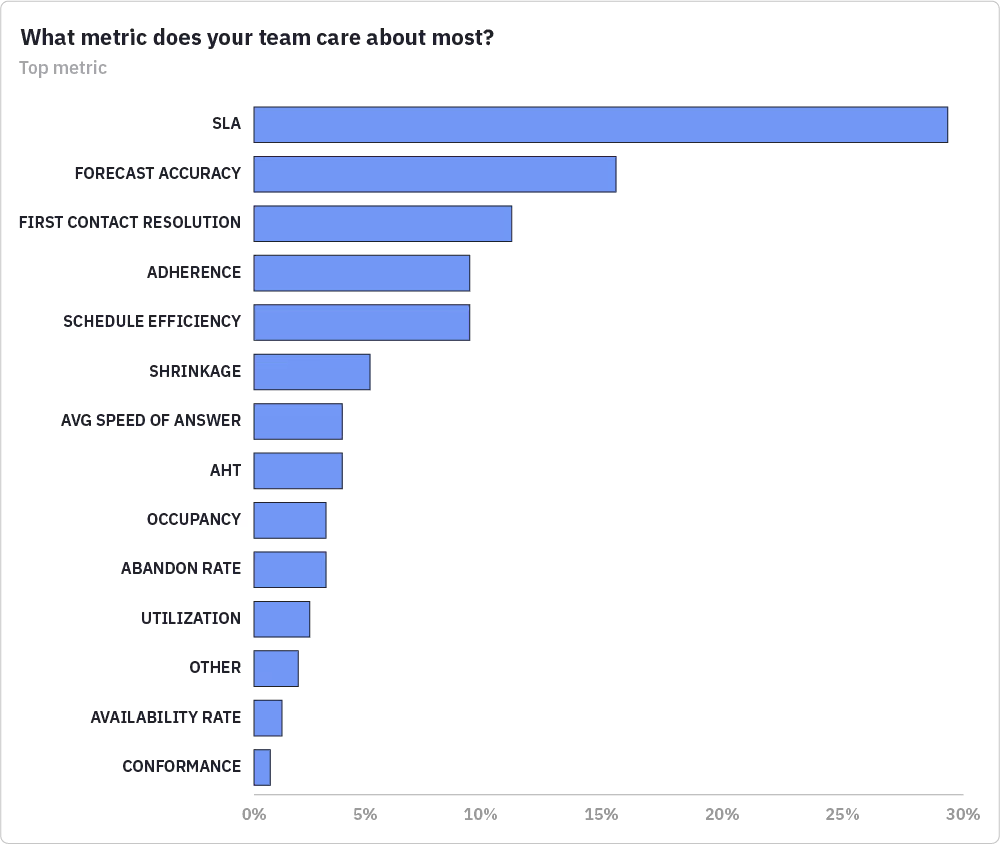
SLA+ students
You’ve heard the phrase “C’s get degrees,” but that doesn’t seem to be the case for the support teams we polled. Most teams are shooting for 86% or higher. What’s more, an astounding 19% of survey respondents believe 96–100% is an achievable SLA target, while 36% have their sights set on 91–95%. Talk about bringing your A game!

Industry SLA-ers
Not all SLA goals are created equal. The targets set by different teams are largely driven by the industries they support. Perhaps unsurprisingly, healthcare sees the highest percentage of teams setting their SLA at 96–100% — a reflection of the literal life-or-death nature of healthcare.
Coming in second is e-commerce with an SLA target of 91–95%. While there may not be lives on the line in this category, the pandemic-fueled race to conduct business on the internet has driven fierce competition among e-commerce rivals. As such, fast and responsive customer support has become a primary differentiator.
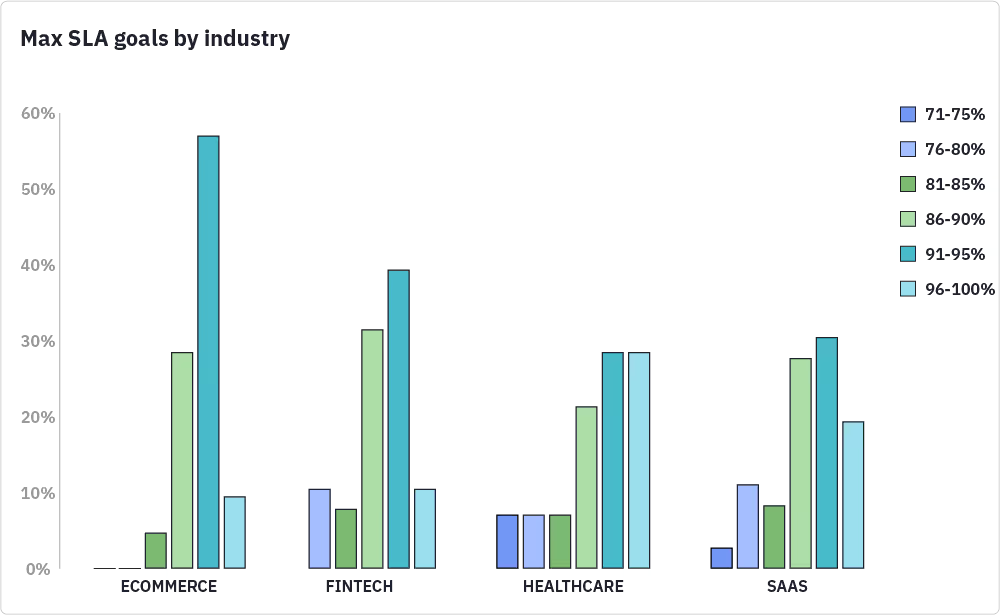
Forecasting doubt
As far as we know, a legitimate crystal ball has yet to be developed (holler at us if you’ve got any leads). Until support teams can reliably predict the future, their forecasts will have to do. Recall that 35% of support teams report forecast accuracy as the most important metric they track — and with good reason, too. Accurate forecasts sit at the epicenter of effective contact center operations.
There’s a big problem, though. Nearly 29% of survey respondents say relying on their WFM tool to provide an accurate forecast is the top challenge they are facing. This is a particularly pressing issue for companies with more than 5,000 agents.

Channel surfing
Omnichannel workflows continue to confound even the most seasoned of support teams. But at the end of the day, the customer gets what the customer wants. And what customers want is the ability to contact support when and where they want it — oftentimes switching between channels and expecting your team to keep up with the conversation.
The most popular channels are email, live chat, and phone — but social media and video support are on the rise. 78% of all support teams surveyed offer at least three channels.
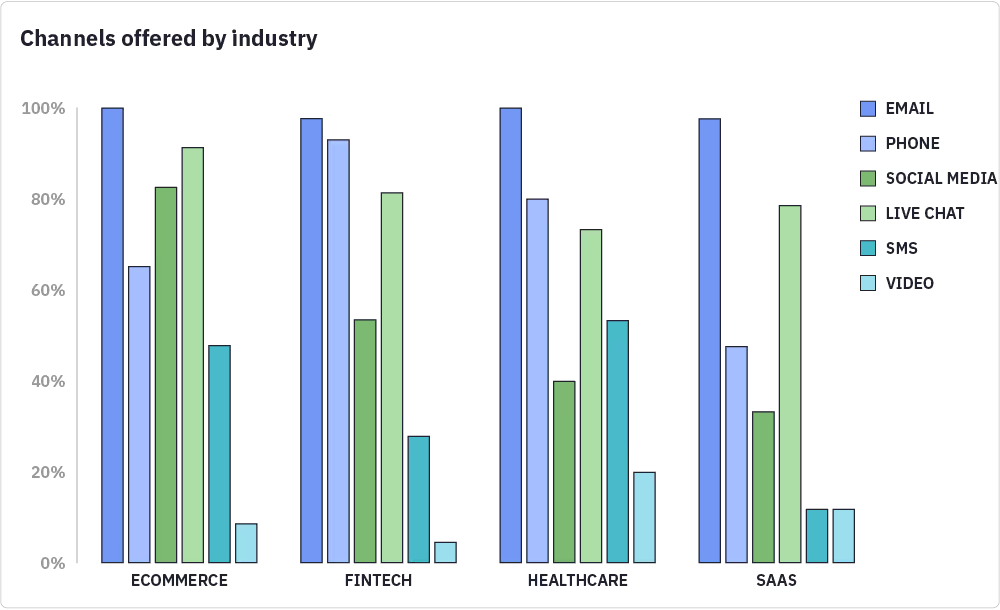
Email my heart
Who says email is old school? According to our survey, 96% of support teams offer email support. In fact, it’s the only channel that’s consistently offered across every industry we polled. Three out of every four teams also offer live chat and phone, while half of support teams surveyed offer additional support via social media.
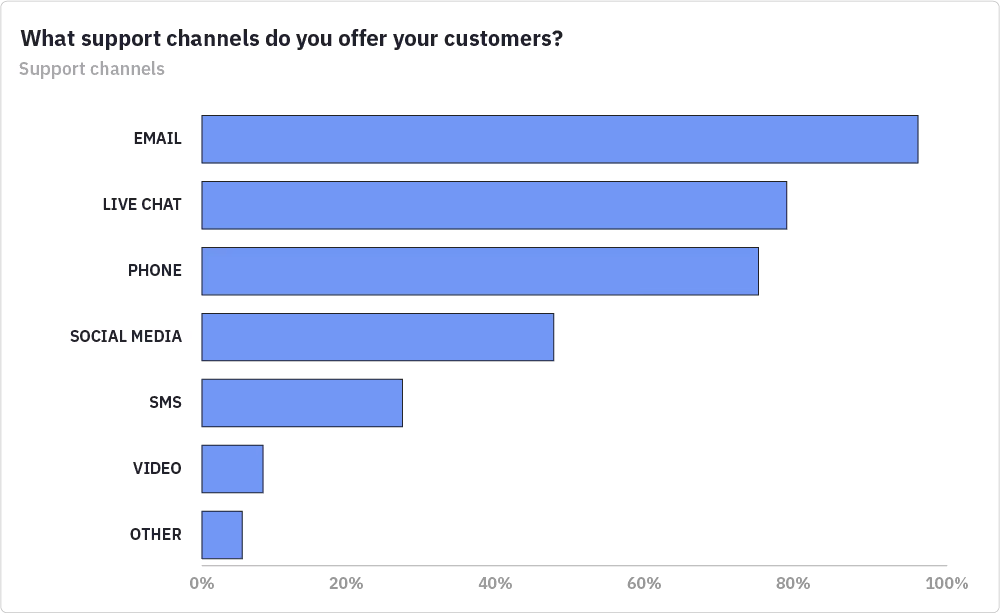
There’s a new channel in town
After several years of Zoom happy hours, remote work, and online education, it appears that video conferencing apps have embedded themselves more permanently into the fabric of daily life — even if we have returned to some semblance of in-person normality. All things considered, it’s no surprise that video support is on the rise. 10% of support teams now offer video support — a number we expect to go up in years to come.
Tech-tonic shifts
Purchasing decisions? In this economy?? “Do more with less” is an easy contender for phrase of the year in 2023, but we know from our conversations with support teams of all sizes that it’s somewhat of an oversimplification. As economic drama continues to play out on the global stage, company leaders are scrutinizing technology investments under a microscope. That said, they’re willing to open their purses for investments that will reduce costs and increase operational efficiencies.
Take my money
You probably won’t be too surprised to learn that data/analytics and automation are the big winners here. 47% of support teams plan to invest in data/analytics while 46% plan to invest in automation.
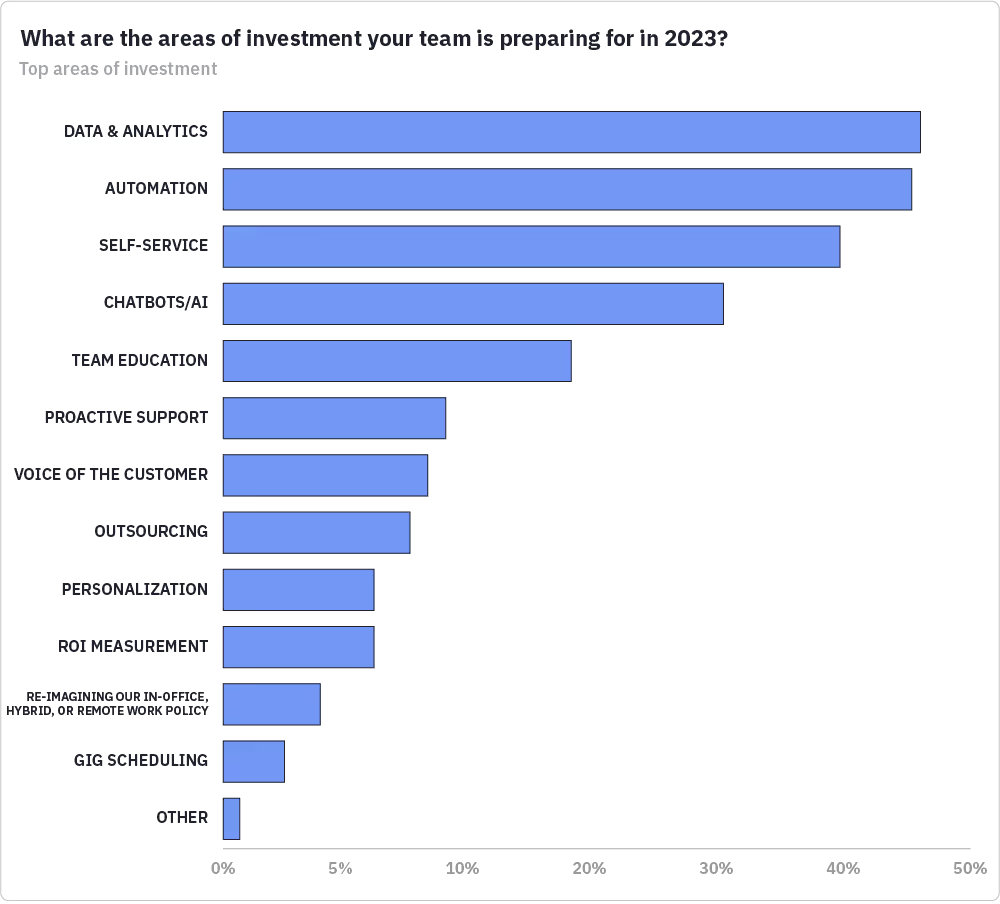
Industry matters
Data and analytics may have topped the podium more broadly, but priorities differ from one industry to the next. Companies across e-commerce, healthcare, and SaaS have their sights set on better self-service functionality. Recall that e-commerce and healthcare are really big on A+ SLAs, which might help explain their drive for more effective self-service.

Size matters
You know what they say about big companies — big investments in data and analytics. Remember when we said forecast accuracy is the second most important metric for the support teams we polled? This is where good data and robust analytics really shine. Our findings show that larger companies tend to be more invested in funding the big data analytics revolution.
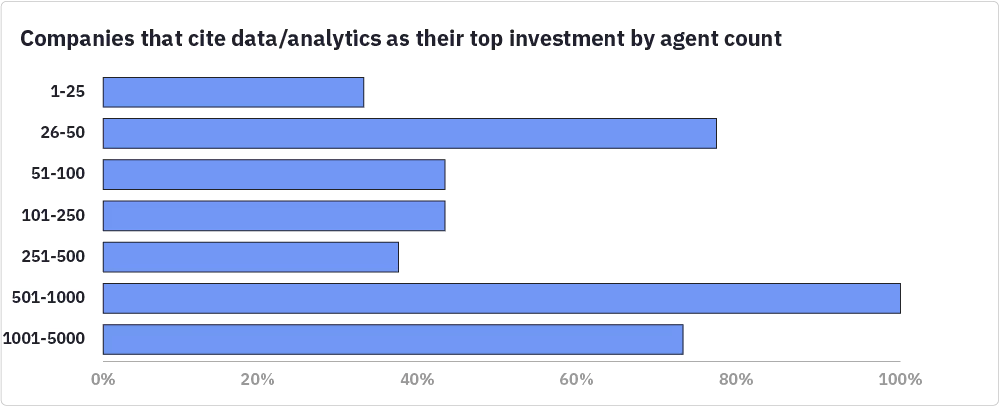
Taking stock
It’s always, “What do you want?” and never, “What do you have?” So, we polled support teams about the tools they use. 79% of survey respondents rely on a WFM tool and 54% use a customer relationship management (CRM) tool. Business intelligence (BI) tools and quality assurance (QA) platforms were tied at just under 43%.
WFM or bust
It doesn’t matter which industry they serve or how many agents are on their team, most support teams rank WFM tools as number-one on their list of must-haves. Spreadsheets have long been a trusty sidekick to workforce managers and contact center leaders. But as WFM tools continue to grow in sophistication, many have recognized the many benefits of incorporating WFM tools into their tech stacks. If the tool is right, it’ll pay for itself and then some.
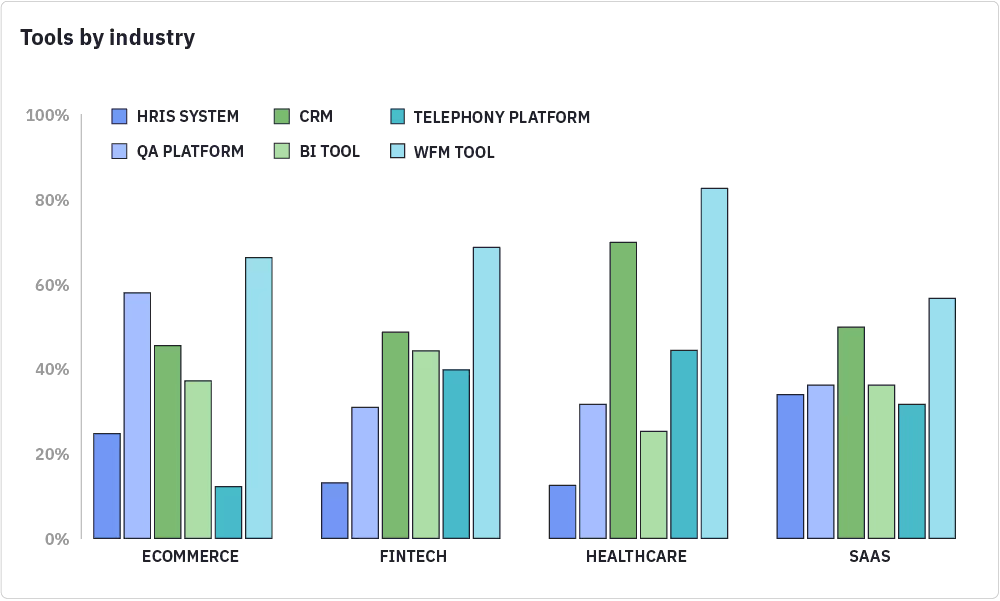
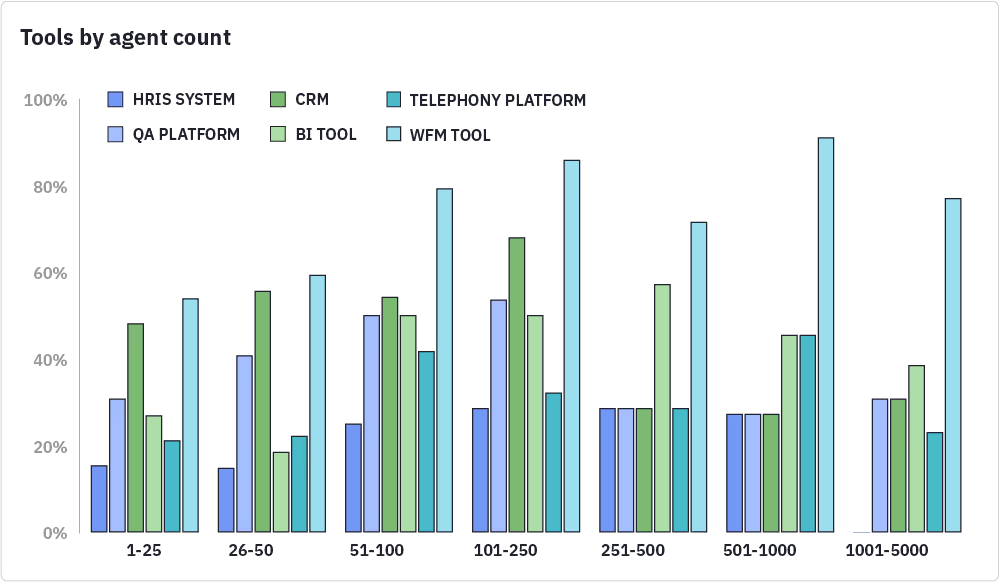
Are you in or are you outsourced
According to research conducted by Deloitte, annual spending on business process outsourcing (BPO) is projected to hit $212 billion this year — a 19% increase from 2019. And according to our research, at least 60% of support teams are outsourcing in some capacity.

One size does not fit all
A closer look at the data reveals absolutely zero rhyme or reason to when, why, or how much work a company chooses to outsource. About 10% of teams are 81–90% outsourced, with fintech having the highest percentage of outsourced work. Compare this to e-commerce, healthcare, and SaaS, which outsource 31–40% of their work on average.
Personally, we’ve seen outsourcing work for many different companies at different stages of maturity. Some outsource from the get-go while others outsource to expand into more geographies as the company grows. The good news? We’ve never seen a wrong answer.
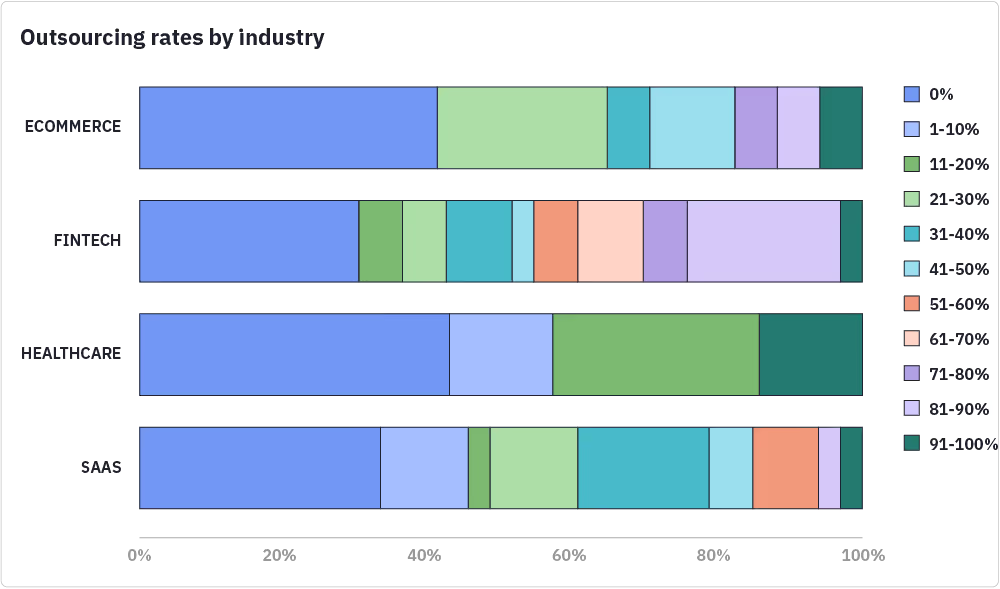
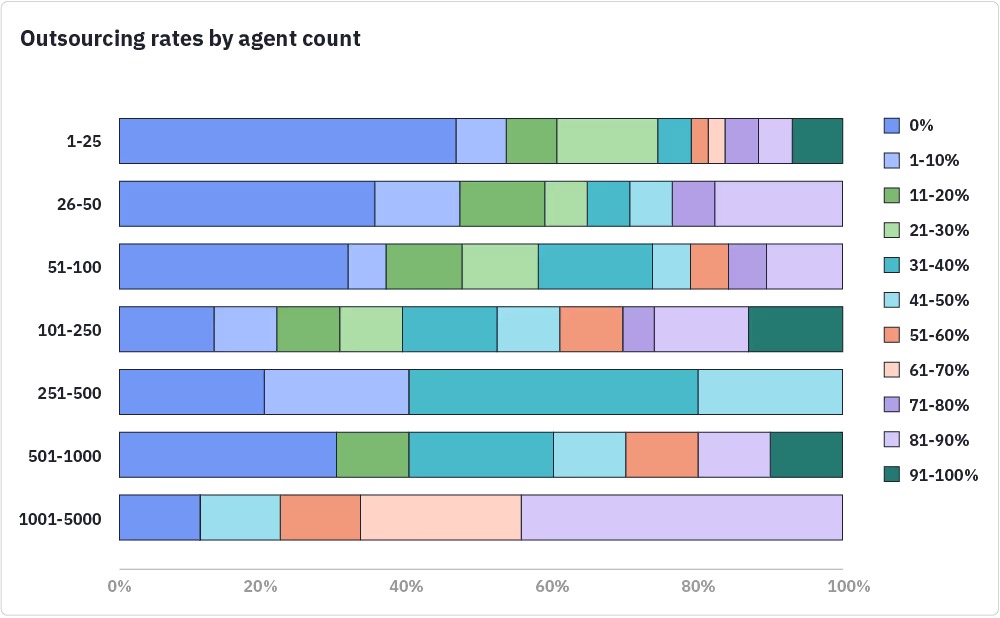
Data deluge
Data is gold in the information age — if only companies can figure out how to efficiently access and manage it. Customer support is not immune to the data problem. According to our survey, bringing data together in a single source of truth is the number-one challenge for 44% of support teams this year. Accessing reliable data was not far behind, with 38% of support teams citing reliable data access as their biggest challenge.
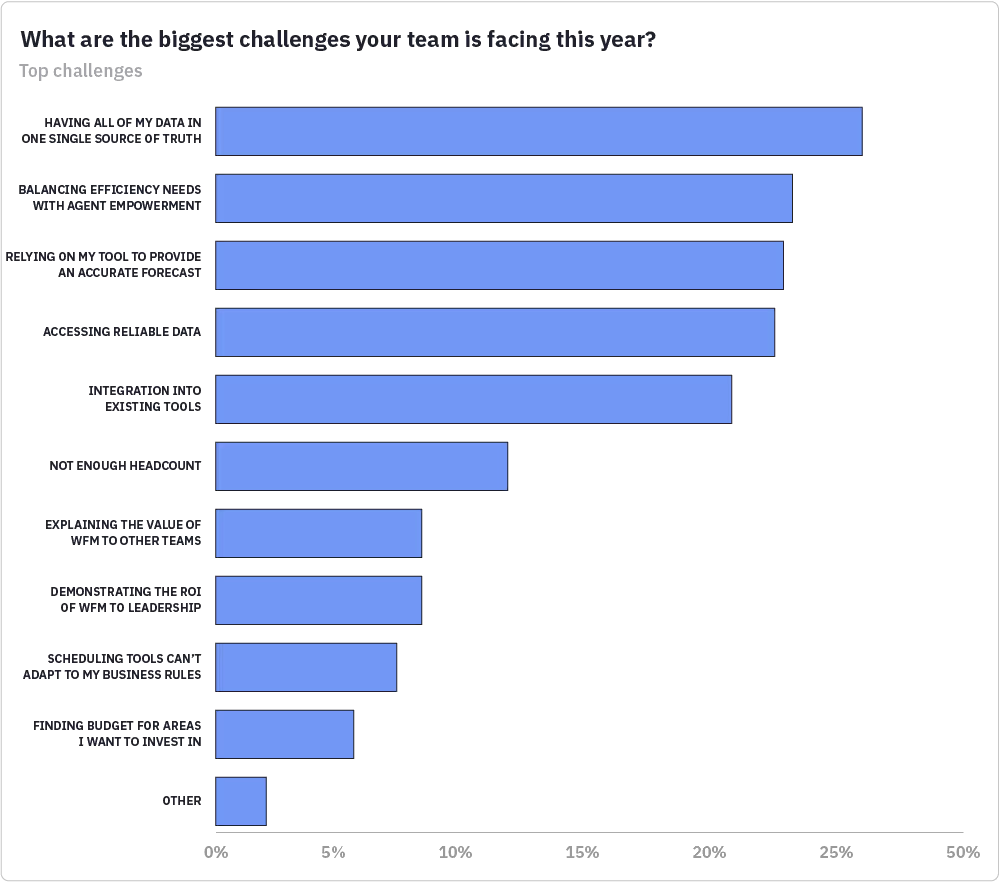
Recall that most support teams rely on multiple tools, including WFM, CRM, BI, and QA. Without a way to connect these disparate sources of data, support teams must engage in the cumbersome and inefficient process of tab switching and data reconciliation — that is, if they have the in-house resources to support it. Sadly, the manual toil of this endeavor has led too many teams to give up on their pursuit of good data altogether. But at what cost?
Solutions that provide reliable access to trustworthy data in real time hold the key to unlocking teams’ maximum potential in the new era of customer support.
The robots are coming
Just when you thought you’d finally escaped mention of AI…
We know you’re sick of hearing about it, but you know we had to ask. According to our survey, 70% of support teams plan to leverage AI in the upcoming year. “But how?” you may be wondering. Primarily for ticket deflection, ticket triage, and proactive support.
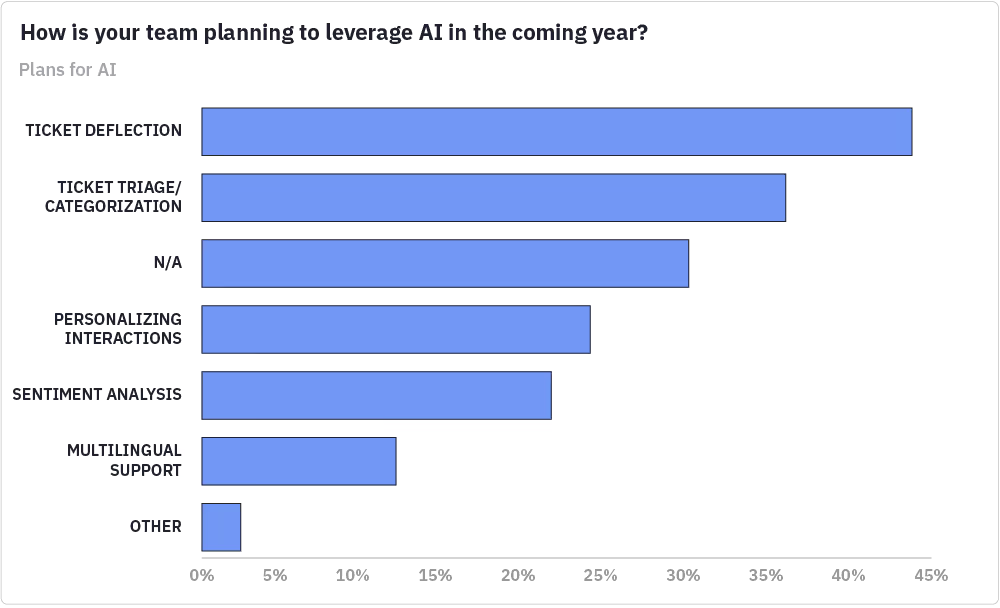
It’s cool, they’re with us
While there are certainly fears around how AI will impact peoples’ jobs, general word on the street seems to be that AI will help support teams do their work more effectively and efficiently. And so far, the humans are feeling pretty confident in their comfort level and knowledge of AI. On a scale of 1–5, most support teams rated their AI comfort level and knowledge at a 3.
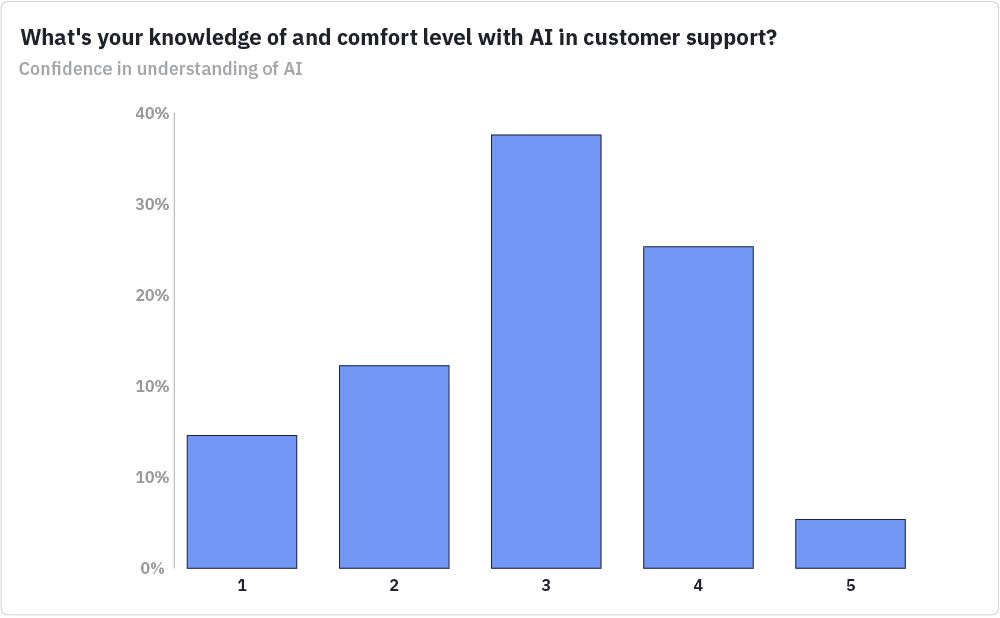
Destination unknown
As you continue to traverse the intricate labyrinth of modern customer support, it helps to keep in mind that change will be the only constant. This moment doesn’t just require adaptability — it demands ingenuity. Maintain your resolve to press forward, gifting the industry with your unique perspective and carving out pathways where none existed before.
Our survey reveals key trends, challenges, and opportunities in play in this ever-evolving landscape. In this brave new world, data analytics and automation will rein supreme. Survival will depend on accurate forecasts, seamless omnichannel support, and AI-enabled solutions that don’t make your customers want to bang their heads against their keyboards.
While technological advances will uncover new frontiers, it’s the human spirit that will push industry innovators to plant their flags in them. The most essential element of success has always been and will continue to be the understanding, empathy, and diligence support teams bring to their craft. At the end of the day, you can’t automate humanity.

